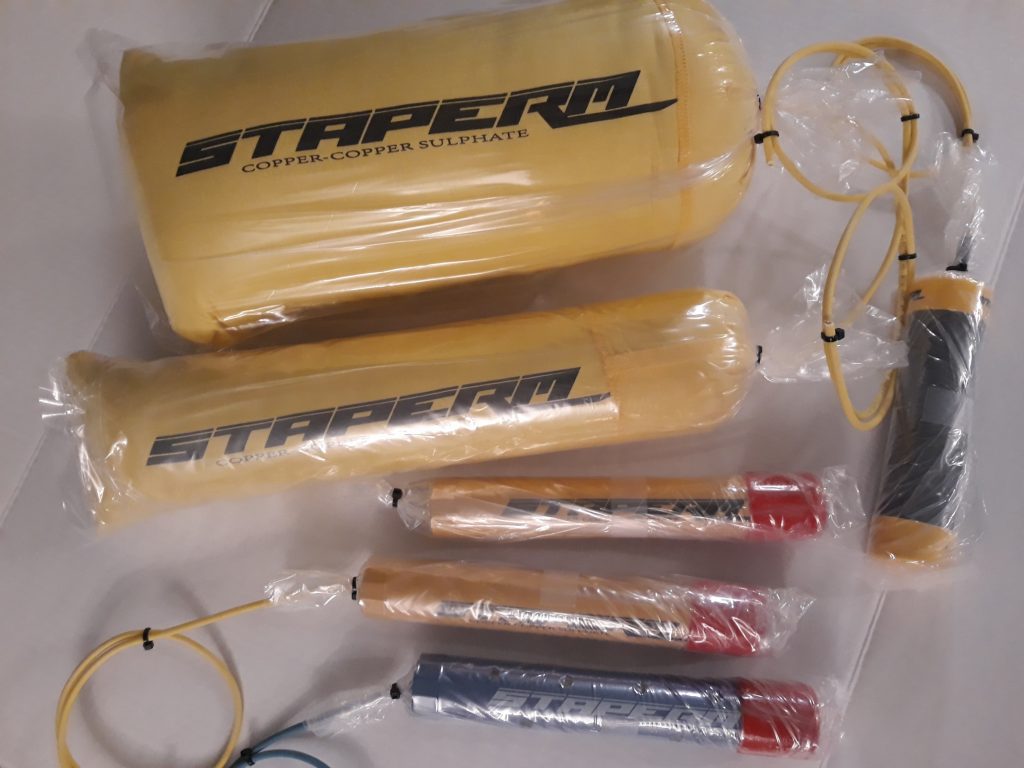
Staperm Electrodes
Cathodic protection (CP) is one of the few methods that successfully mitigates corrosion and since all metallic structures in contact with water, soil, concrete, and moist air are subject to corrosion, CP technology can be applied in any situation where the environment surrounding the metal acts as a conductor for electric current. Cathodic protection plays a vital role in successfully protecting your assets including offshore structures, ships, boats, propellers, moorings, pipelines, storage tanks, piers, jetties, bridges, aquaria, instrumentation etc.
How does one adequately determine the adequacy of your cathodic protection system on a certain structure?
To fully understand the extent of the structures protection against corrosion one needs to determine and measure its polarized potential . The polarized potential is the summation of corrosion potential and the amount of polarization that the structure has, excluding the soil IR drop
Polarized potential is the potential across the structure-to-electrolyte interface, there are a number of practical ways that one can use to measure a structure’s polarized potential with the use of reference electrodes being the most common and effective! Specifically when they are used in locations where a constant, stable reference is required, for example with constant potential rectifiers and at inaccessible locations.
When using a reference electrode, it is important that it is placed as close as possible to the protected structure, so that the soil IR drop can be minimized. It is recommended that the reference electrode is placed at twice the reference electrode diameter from the structure so that it does not eliminate the CP current.
This technique is however, impractical for buried pipelines, except at places where the pipeline enters or exits from the ground but it can be successfully used for underwater pipelines.
For coated pipelines, the reference electrode should be placed close to the pipeline and near the coating, unfortunately in this case the IR drop cannot be minimized since the reference electrode would need to be placed close to the coating holidays in order to get the most accurate measurements, which is not always practical.
For applications inside water storage tanks, the electrode should be positioned as close to the wall of the tank as possible. The same is true for waterfront and offshore structures; the electrode should be as close to the piling as possible. In contract when the application involves moving water, the electrode may swing about, so it is ideal if the structures is equipped with guide wires or perforated plastic ducts to restrict the movement of a portable electrode.
When taking measurements for a on-grade storage tanks, the data usually needs to be taken around the periphery of the tank. The optimal situation would be to use Stationary reference electrodes under the tank bottom in order to yield the best data. Alternatively, if a perforated plastic tube could be installed under the tank and filled with water, a reference electrode can be pulled through it and potentials measured at intervals underneath.
An alternative to placing the reference electrode close to the structure is to install a plastic tube filled with soil from the grade next to the pipe surface and put the reference electrode in it.
Cathtect USA offers expert advice on which reference electrode is the right fit for your specific Cathodic protection application! Contact us today and let Cathtect help and ensure you get the best reference electrode for all your CP needs!
















